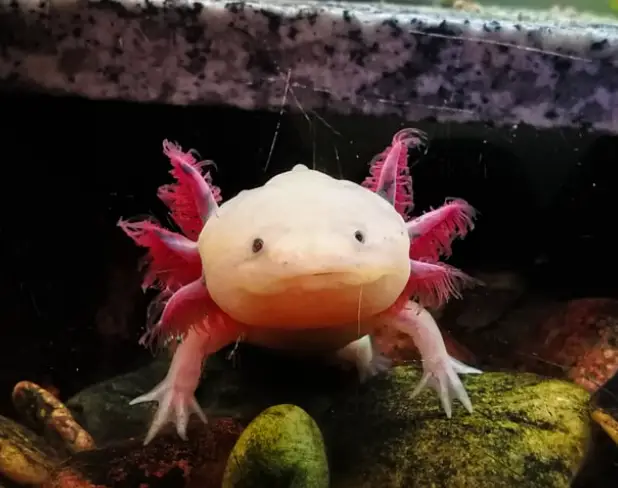Keeping axolotls as pets can bring a lot of joy and entertainment to the household. However, when it comes to decoration and substrate choices for their aquarium, there are some safety concerns that should be taken into consideration. One of the most common problems is that of the axolotls swallowing the gravel or sand in their aquariums, which can cause serious health problems or even death. In this article, we will outline the ways to prevent your axolotls from swallowing substrate, addressing the following questions:
Why do axolotls swallow substrate?
Axolotls are known to be curious creatures. They love to explore their surroundings and often taste whatever they come across, including the substrate on the bottom of their aquarium. Sometimes, they may even mistake small objects like gravel or sand for food and try to swallow them, which can be very dangerous.
What are the dangers of an axolotl swallowing substrate?
The main danger of an axolotl swallowing substrate is the risk of intestinal blockage. If a large amount of substrate is ingested, it can become lodged in the intestine, causing a blockage that can be life-threatening for the axolotl. Symptoms of an intestinal blockage may include reluctance to eat, lethargy, and constipation.
In addition, some substrates may contain harmful chemicals or minerals that can be toxic to axolotls. For example, some types of gravel may be coated in oils, which can be harmful to axolotls. Moreover, some sands, especially those containing calcium, may increase the pH of the water, which can be detrimental to axolotl health.
How can you prevent axolotls from swallowing substrate?
There are several ways to prevent your axolotls from swallowing substrate:
a. Choose the right substrate: Choosing the right substrate is crucial when it comes to axolotl care. It is recommended to use a large-grain sand or small pebbles as substrate to prevent your axolotls from swallowing them.
b. Feed your axolotls properly: Feeding your axolotls a varied diet will help curb their curiosity towards their substrate. Ensure that they are getting sufficient amounts of food, as underfed axolotls may be more prone to consuming substrate out of hunger.
c. Provide hiding places: Axolotls often swallow substrate out of curiosity. By providing enough hiding places in the aquarium, they can satisfy their curiosity without swallowing anything harmful.
d. Remove any small substrate pieces: By removing any small pebbles, gravel or other items from your aquarium, you can prevent your axolotls from swallowing it. Any small bits of substrate that may be less than 0.6 inches in diameter should be carefully extracted from the aquarium.
e. Avoid overcrowding: By avoiding overcrowding the aquarium, you can prevent your axolotls from ingesting substrate. When the axolotls do not have enough space to move around freely, they can feel stressed and turn to ingesting substrates.
What kind of substrate is safe for axolotls?
Choosing the right substrate for axolotls is essential for their wellbeing. Ideally, you should choose a substrate that is large-grain sand or small pebbles. Some commercial gravel and sand mixes are also available that are safe for axolotls and will not harm them in any way. You can also opt for bare-bottomed aquariums which provide plenty of swimming space and cleaning-up is much easier when you don’t have to worry about substrate.
Can cage-free alternatives be used for axolotl aquariums?
Cage-free alternatives, such as bare-bottomed aquariums can be used for axolotl aquariums. They provide plenty of swimming space, are easy to clean and saves your axolotls from swallowing substrate which can be harmful to their health. However, without a substrate, a bare-bottom can look bare and also be slippery which may cause stress on the axolotls, thus it’s important to provide hiding places and provide resting areas for the axolotls.
What is the best way to maintain cleanliness in an axolotl aquarium?
Maintaining cleanliness in an axolotl aquarium is crucial for their health. Here are a few ways you can maintain a clean and healthy aquarium:
a. Perform regular water changes: Water changes help remove excess nutrients and waste from the aquarium, which can be detrimental to axolotls. Twice weekly 25 – 50% water changes may suffice. Based on the efficacy of the filtration system and overall aquarium decorate, you may need to adjust this to meet the needs of the axolotls in the aquarium.
b. Use a good filtration system: Ensure that your aquarium filtration system is sufficient to keep the water clean and healthy for your axolotls. The filter should be rated for at least 2-3 times the size of the aquarium. You can also use a sponge filter for biological filtration and circulation of aquarium water.
c. Clean the aquarium: Regular cleaning of aquarium equipment such as filters, heaters, and siphons can help maintain cleanliness. Ensure you scrub and rinse the ornaments and glass regularly to maintain good viewing conditions and a healthy underwater environment.
d. Maintain the right temperature: Axolotls thrive in temperatures between 60-68ºF (15.5ºC – 20ºC). Maintaining the right temperature by the use of a chiller or an aquarium heater, helps maintain healthy nitrogen cycling which helps maintain cleanliness.
Conclusion
In conclusion, preventing axolotls from swallowing substrate is crucial for their health. By choosing the right substrate, feeding them properly, providing hiding places, avoiding overcrowding, and maintaining cleanliness in the aquarium, you can ensure that your axolotls remain healthy and happy.







